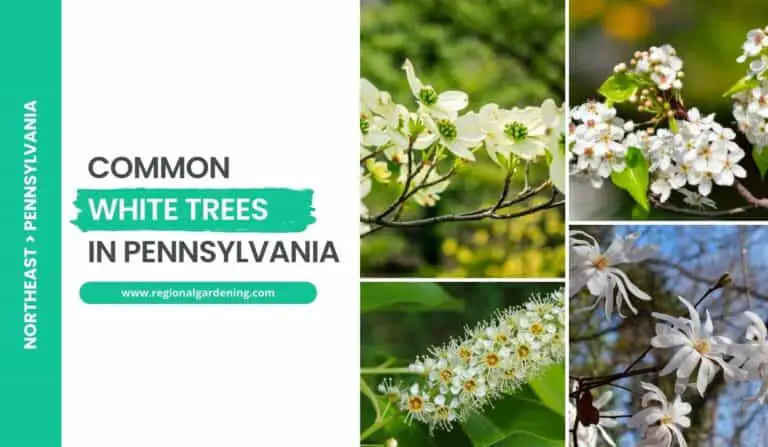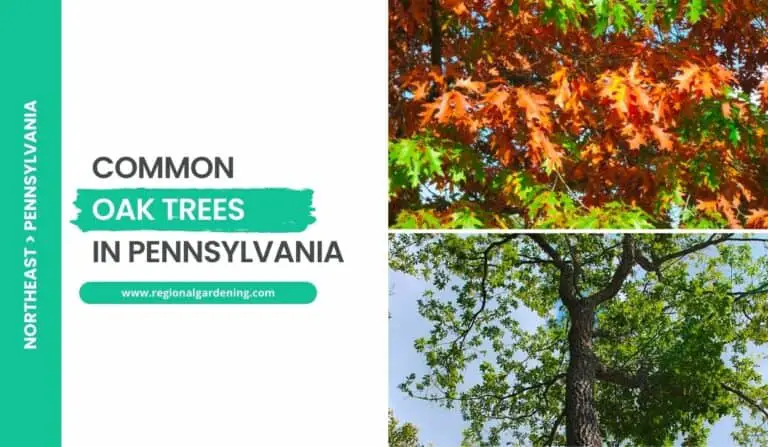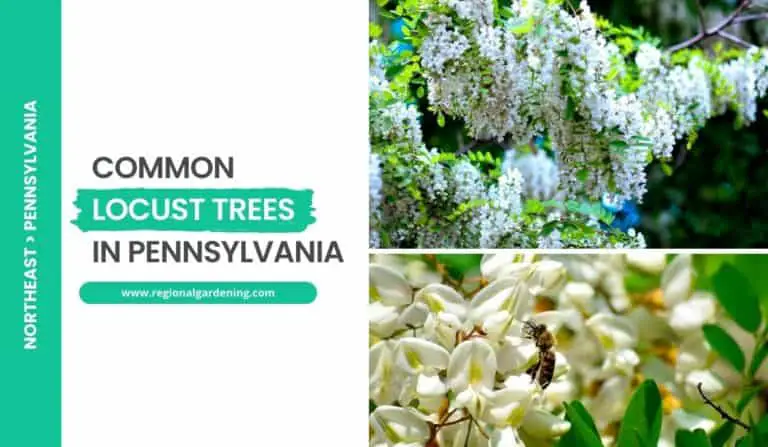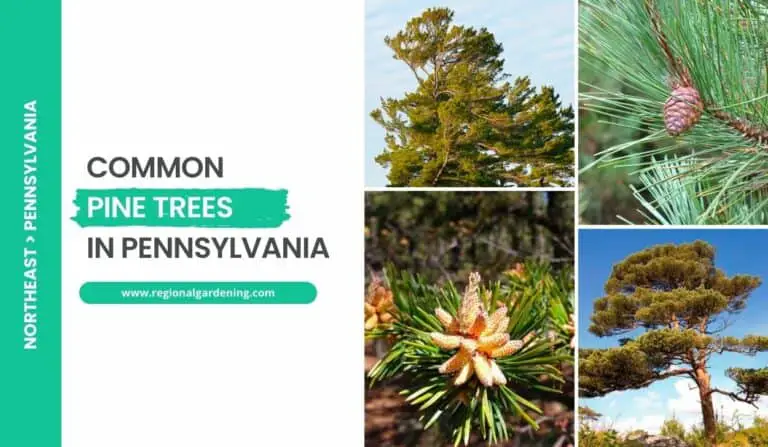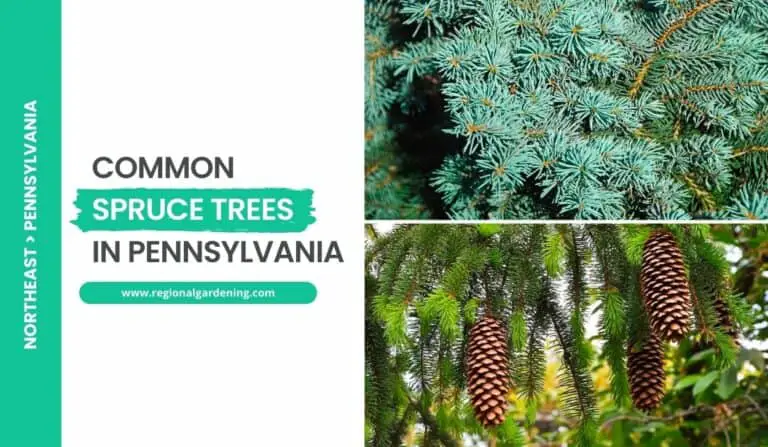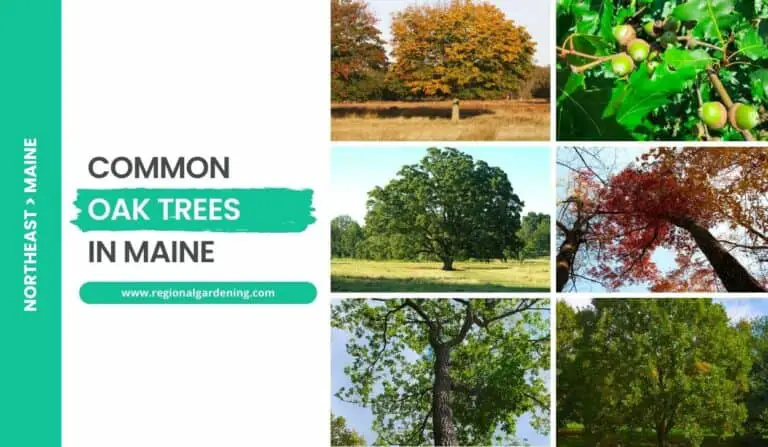3 Native Birch Trees In Pennsylvania (Photos & ID Guide)
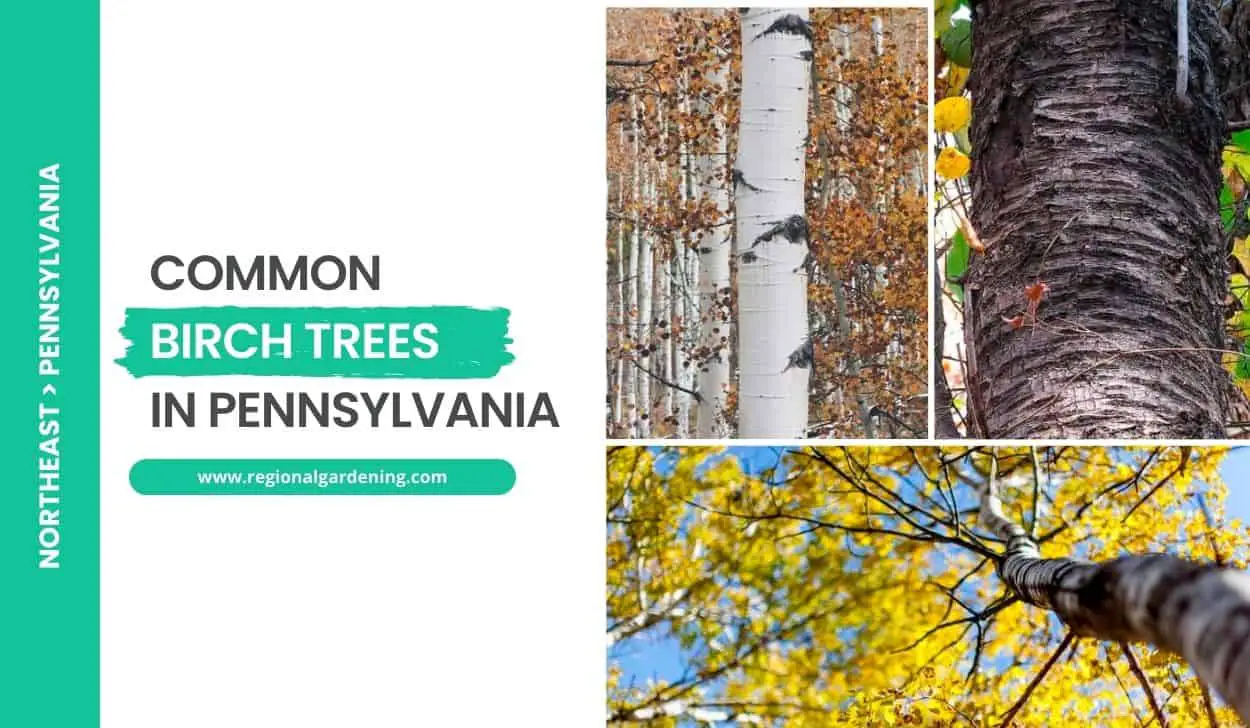
Pennsylvania is home to three types of birch trees, each with its own distinctive charm and characteristics. In this article, we will explore three such birch trees found in the state, providing you with captivating photos and detailed descriptions.
From the iconic peper birch, with its striking white bark and delicate leaves, to the robust yellow birch, known for its distinctive golden bark and wintergreen aroma, we will delve into their unique features and growing preferences.
So, let’s get started with the Paper Birch, the most common of all the birch trees in Pennsylvania.
1. Paper Birch
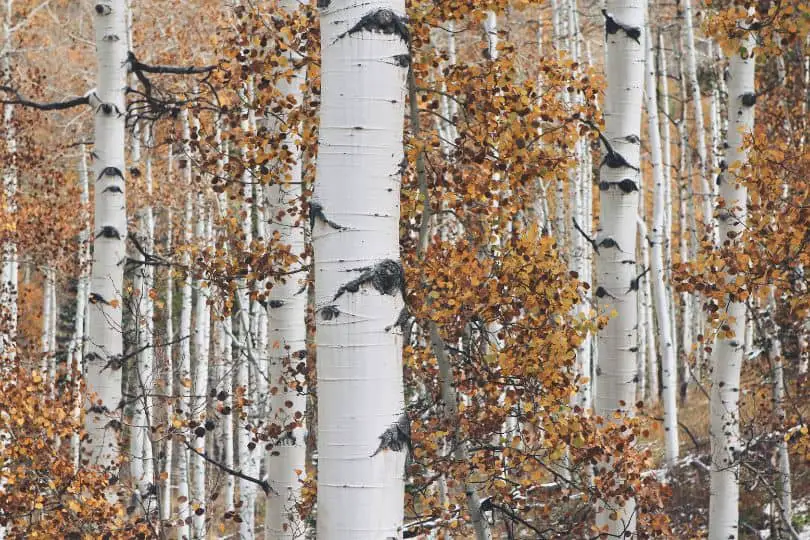
- Scientific Name: Betula papyrifera Marshall
- Common Name(s): Paper Birch
- Mature Height: 50′-75′ (15-23 meters)
- Native Region: Northcentral and northeastern Pennsylvania, United States
- Flowers: No flowers
- Fruit: Small 2-winged nutlets held in a cone-like structure of scales about 1½” long
- Uses: Native Americans used the bark for constructing canoes, shelters, and containers.
The Paper Birch is one of the most important birch trees in Pennsylvania landscapes. It is a big deciduous tree found in the highland woodlands and slopes of northcentral and northeastern Pennsylvania.
It can grow to be 50 to 75 feet (15 to 23 meters) tall when mature. The tree is notable for its alternately placed, simple leaves that are 2 to 3 inches long and 112 to 2 inches wide. The leaves’ upper surface is dark green, while the lower surface is pale green. The leaves have serrated borders and a sharply pointed apex. At the base, they are constricted or rounded.
The Paper Birch twigs begin greenish and hairy before becoming smooth and reddish-brown. The tree has little fruit called 2-winged nutlets. These nutlets are held in a cone-like structure of scales around 112 inches long. One of the most distinguishing characteristics of the Paper Birch is its bark. The trunk and elder branches are chalky to creamy white in color and striped horizontally. Older trunks grow rough and often fissured into uneven thick scales when the bark peels off in small layers.
The Paper Birch is an important part of the environment in Pennsylvania. The tree’s seeds and buds provide food for the state bird, the Ruffed grouse. Deer also feed on the twigs of the Paper Birch. Native Americans used the bark of the tree for a variety of uses. They utilized it to make canoes, shelters, and containers.
The Paper Birch thrives in upland woodlands and slopes and requires little care. It prefers well-drained soil and is fairly adaptable to a variety of soil types. The tree benefits from exposure ranging from full sun to light shade. Watering should be done on a regular basis, especially during dry spells. It’s also a good idea to mulch around the tree to keep the soil moist and preserve the tree’s thin roots. To eliminate dead or diseased branches, prune during the dormant season.
2. Sweet Birch
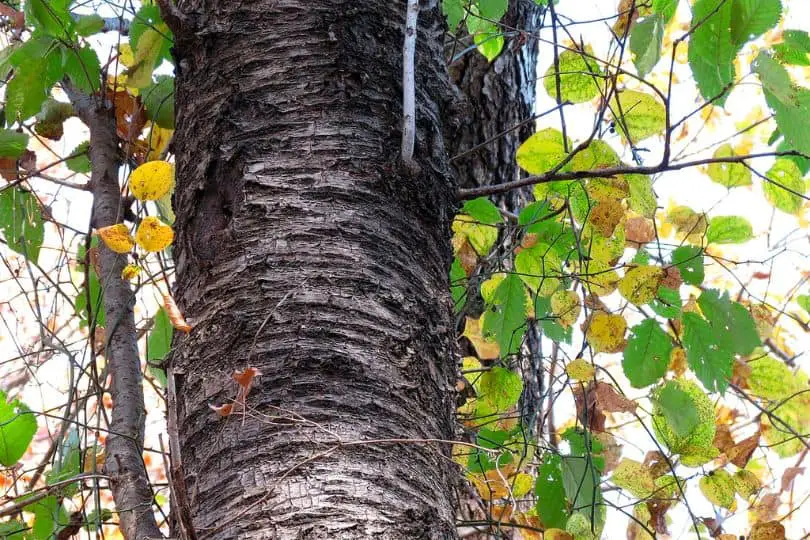
- Scientific Name: Betula lenta L.
- Common Name(s): Sweet Birch, Black Birch, Cherry Birch
- Mature Height: 50-60 feet (15-18 meters)
- Native Region: North America
- Flowers: No Flowers
- Fruit: Small 2-winged nutlets held in a cone-like structure of scales
- Uses: The heavy, hard, strong wood is used for furniture, boxes, and firewood. Distillation of the bark and twigs produces natural wintergreen oil. Fermented sap can be used to make birch beer. Ruffed grouse feed on buds and seeds, and deer and rabbits browse the twigs.
The Sweet Birch, also known as the Black Birch or Cherry Birch, is a deciduous tree that grows to be 50-60 feet tall. It can be found from the fertile lowlands to the steep hills of Pennsylvania. The tree has simple, alternating leaves that are about 212-5 inches long. The leaves are unevenly sawtoothed, dull green on top and yellow-green on the bottom, with white hairs where the veins meet the midrib. Typically, the leaf base is heart-shaped.
When young, the twigs of the Sweet Birch are green and somewhat downy, but as they age, they turn reddish-brown and smooth. The twigs’ intense wintergreen flavor and scent are one of their distinguishing characteristics. The buds are reddish-brown in color, conical in shape, sharply pointed, and polished.
Sweet Birch fruit consists of little 2-winged nutlets held in a cone-like structure of scales. These cone-shaped constructions are approximately 112 inches long. The bark of the younger trees is tight and dark reddish-brown, with horizontal bands of pale lenticels, similar to that of juvenile Black Cherry trees. The bark of ancient trees splits into enormous black plates.
The Sweet Birch has a variety of applications. The heavy, hard, and sturdy wood is prized for use in furniture, boxes, and as fuel. Natural wintergreen oil can be extracted from the bark and twigs. In addition, the tree’s fermented sap can be utilized to manufacture birch beer, a traditional beverage. The Sweet Birch also supports wildlife, as ruffed grouse dine on its buds and seeds, while deer and rabbits nibble on its twigs.
Sweet Birch may be a lovely addition to Pennsylvania landscapes, giving shade and aesthetic intrigue with its heart-shaped, saw-toothed leaves. Care should be taken to establish the tree in an appropriate site based on its natural habitat preferences. This tree thrives in a wide range of environments, from lush plains to steep slopes. To encourage healthy growth, well-drained soil and proper irrigation are essential. Pruning to remove dead or damaged branches on a regular basis can assist maintain the structural integrity of the tree. Sweet Birch may be a vital and appealing addition to Pennsylvania landscapes if properly cared for.
3. Yellow Birch
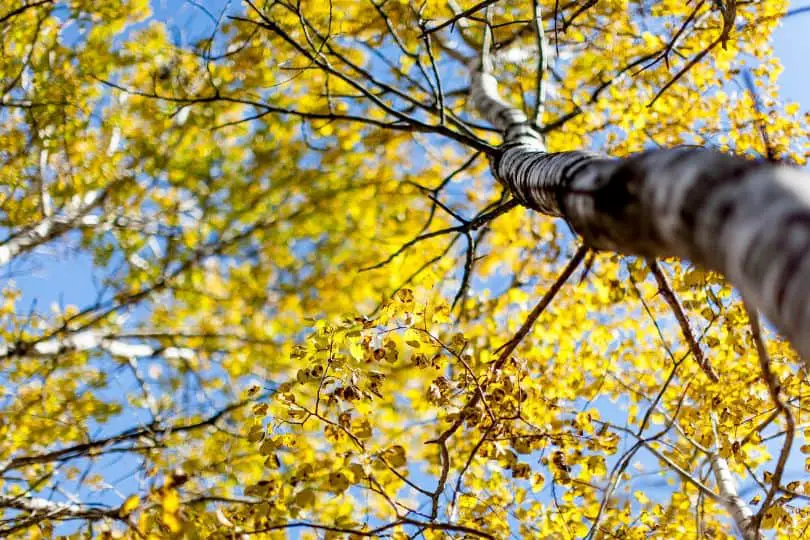
- Scientific Name: Betula alleghaniensis Britt.
- Common Name(s): Yellow Birch
- Mature Height: 60′-75′ (occasionally up to 100′) [18-23 meters]
- Native Region: North America
- Flowers: No Flowers
- Fruit: Small 2-winged nutlets held in a conelike structure of scales about 1½” long
- Uses: The wood is used for cabinets, furniture, flooring, and doors. It was also traditionally used for distilling wood alcohol, acetate of lime, tar, and oils. The papery shreds of bark can be used as a fire starter, even in wet conditions. Ruffed grouse feed on buds and seeds, while deer and rabbits browse on the twigs.
Yellow birch (Betula alleghaniensis Britt.) is a medium to large deciduous tree widespread throughout Pennsylvania. It can grow to a height of 60 to 75 feet, with some reaching 100 feet. The tree prefers damp, cool soils and cool summer temperatures, and it is most commonly found on north-facing slopes and swamps.
The Yellow Birch leaves are alternating, simple, and about 3 to 4 inches long. They have doubly toothed borders and are dull green on top and yellow-green on the bottom. The tree’s twigs are first green and hairy before turning brown and smooth. The buds are a dull yellowish-green color that is slightly downy.
Young stems and branches of the Yellow Birch have yellowish or bronze bark that peels off in thin papery strips. The bark of older trunks, on the other hand, turns reddish brown and cracks into huge, ragged-edged plates as the tree ages.
While the Yellow Birch does not have beautiful flowers, it does have little winged nutlets that are held in a conelike structure of scales about 112 inches long. The nutlets on birch trees are distinctive.
The Yellow Birch is used for a variety of purposes in Pennsylvania. Its wood is highly prized for its strength and durability, making it ideal for building cabinets, furniture, flooring, and doors. It was also previously used to distill wood alcohol, acetate of lime, tar, and oils. In an emergency, the papery shreds of bark from the Yellow Birch can be scraped off and utilized as a fire starter, even in damp conditions.
In addition, the Yellow Birch serves as a food source for wildlife. Ruffed grouse eat the tree’s buds and seeds, while deer and rabbits nibble on the twigs. Its presence in Pennsylvania landscapes gives both aesthetic and ecological value to the ecosystem.
Similar Articles
- Common Flowering Trees In Pennsylvania
- Common Maple Trees In Pennsylvania
- Common Cherry Trees In Pennsylvania
- Common Pine Trees In Pennsylvania
- Native Locust Trees In Pennsylvania
- Common Nut Trees In Pennsylvania
- Common Cedar Trees In Pennsylvania
- Common Palm Trees In Pennsylvania
- Common Oak Trees In Pennsylvania
- Common Aspen Trees In Pennsylvania
- Common Spruce Trees In Pennsylvania
- Common Ash Trees In Pennsylvania
- Common Elm Trees In Pennsylvania
- Pink Flowering Trees In Pennsylvania
- White Flowering Trees In Pennsylvania
- Purple Flowering Trees In Pennsylvania
Native Birch Trees In Pennsylvania – Sources
The Regional Gardening team makes sure that the information in our articles is accurate by only using sources that are known to be trustworthy. Some of these sources are peer-reviewed journals from government agencies, well-known universities, and scientific research organizations.
- Native Plant Resources, Pennsylvania Native Plant Society
- Trees & Shrubs Varieties, PennState Extension
- Landscaping With Natives, Pennsylvania Department Of Conservation, & Natural Resources.
- Explore Pennsylvania Forests, Pennsylvania Department Of Conservation, & Natural Resources.


